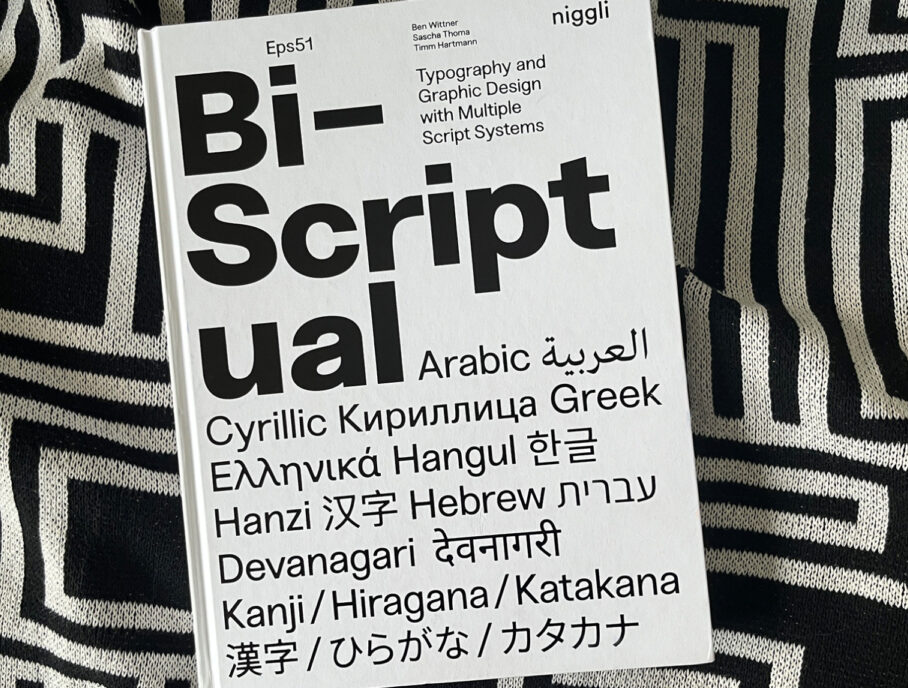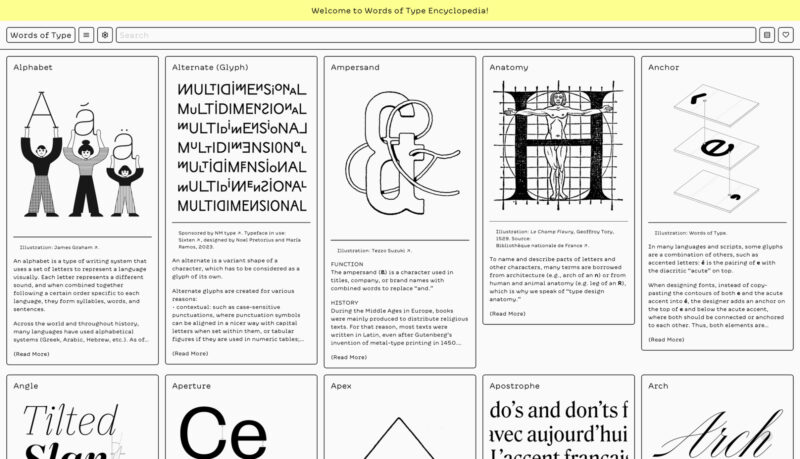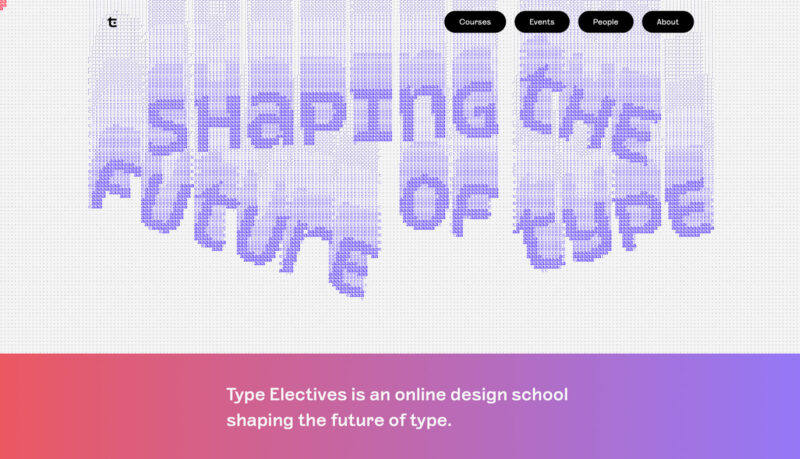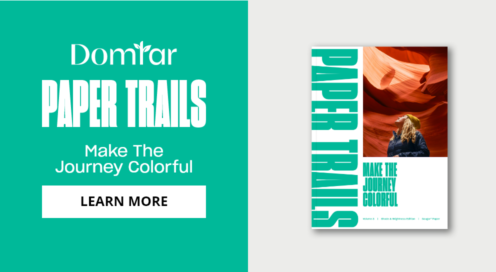Multi-script typography resources to bookmark now
Written by Jumanah Abualkhair Associate RGD and Michael J. Young RGD, Ontario Public Service
Working on a multi-scriptural design project can be tricky, especially if it’s your first time.
In an effort to help, we’ve gathered some of our favourite resources—a collection of references, inspiration and places to go for a sense of community. Whether you have a project in mind or simply want to broaden your typographical horizons, this post’s for you.
Here are three types of multi-scriptural resources to bookmark digitally with a click or physically with your go-to bookmark.

Learning & Reference
Typography has come a long way from being a niche subject of interest only to printers and publishers. Articles and reference material about non-Latin scripts and multi-script typesetting is more accessible than ever, with resources ranging from beginner to expert coming from a wide variety of cultural perspectives. We’ve pulled together articles, books and entire online archives to get you started.
Online Articles and Lectures
- Beginner’s guide to multi-script typography: This guide from Type-Together offers practical advice about harmoniously combining different scripts. Misunderstandings and common mistakes are also covered in detail.
- Type today – multi-script projects: From reading direction and line-spacing to icons and cultural considerations, this concise article provides a thorough overview of the most important elements when embarking on a multilingual or multi-script project.
- An introductory to multi-script typography: This three-part series explains what scripts are and how they are used digitally. It focuses on common features shared across different languages and writing systems. Parts two and three explore how fonts make use of Unicode to display languages and regional variations accurately.
- Typotheque article library: Typotheque is a type foundry and publisher best known for its contributions to multilingual typography. Articles go deep with in-depth research about developing typefaces to meet the needs of mainstream scripts as well as indigenous language communities.
Books
- Bi-Scriptual: Bi-Scriptual covers eight writing systems through in-depth explorations, discussing sociocultural, technical and practical aspects of multi-script design. In addition to key educational insights, the book includes various examples of projects showcasing real-world applications for graphic designers.
- Graphic Languages: This book serves as a valuable resource for designers looking to dive deeper into global writing systems, discovering both expert insights and historical and cultural contexts. Graphic Languages takes readers on a visual journey, showcasing various typographic forms across 26 distinct writing systems in a true celebration of human communication.
- Typography beyond borders: This English language book fills an important gap by providing an accessible resource for graphic designers needing to work with other scripts and languages. Useful for educators, students and practitioners, it encourages designers to step outside their comfort zone and embrace multilingual projects.
- Writing systems by Geoffrey Sampson: While not aimed at designers, this book provides a strong foundation for learning about historic and contemporary scripts in use around the world. The chapter about digital writing systems provides an overview of how fonts and computer systems have evolved to support both Latin and non-Latin languages.
Glossary
- Words of type: From alphabets to x-height, Words of Type features a growing typographic encyclopedia covering concepts in typography and type design. Available in seven languages, each entry contains illustrations and cross-references.

Inspiration & Applications
Sometimes you’re not looking for references and learning materials. Instead, you’re hunting for inspiration or actual tools that will come in handy. That’s where archives, newsletters and tools like the ones below come in.
Archives
- Chinese type archive: This bilingual website brings together an archive of articles about Chinese design and type, as well as a directory of Chinese fonts.
- Letterform Archive: The archive boasts a collection of over 3,500 graphic design artifacts from around the world, all categorized and tagged for easy browsing.
- Arabic Design Archive: The ADA is an open platform that creates and shares knowledge on Arabic design and its history, making a broad collection of Arabic typographic applications from around the world publicly accessible.
Newsletters
- My Typographic Eye: This newsletter about “typographic curiosities” features interesting and varied type applications with many examples for Indic Scripts.
- Casual Archivist: This newsletter showcases different ephemera, packaging, printed materials and editorial designs. Some of it includes typographic applications in different languages and scripts.
Typefaces
- Noto: Described as a “typeface for the world,” Noto is aimed at providing accessible typefaces for an expansive range of global scripts all while maintaining a consistent visual language. Noto currently supports over 1,000 languages and 162 writing systems.
- Futura 100: A global type family that now communicates in 12 scripts, with language support for over 90% of the world’s population. It’s available as part of the Adobe Font library for Creative Cloud subscribers.

Community & Events
The sense of community you can find in typography is arguably one of the strongest. You can learn with others in various online and in-person spaces. Here are just a few to look into:
- Type Electives: An online design school aiming to “shape the future of type,” offering online courses and events on typography (including many writing systems from around the globe). Their website offers dozens of previously recorded lectures under the event section.
- ATypI: An “international non-profit organization dedicated to typography and typeface design,” having established communities with nominated Country Delegates as well as competitions, awards and publications.
- Granshan: A “hub for global visual identity,” focusing on non-Latin scripts through competitions, conferences and exhibitions.
- EZHISHIN conference talks: A conference of Native North American Typography covering a range of topics and different Indigenous languages.
While working on this article, we came across many helpful resources; much more than we could include here. If you'd like to browse even more links and information about multi-script type, check out the full list on GitHub.

Jumanah Abualkhair Associate RGD

Michael J. Young RGD
Ontario Public Service
Michael J. Young is a Toronto-based designer, developer, and accessibility specialist. Since 2010, he's been with the Ontario Public Service, developing and overseeing branding and marketing campaigns for the province of Ontario in a small but mighty team of creatives. He's currently pursuing his Masters of Digital Media at Toronto Metropolitan University. Beyond his professional pursuits, Michael enjoys repairing old Macs, honing his culinary skills, and urban exploration via public transit.
Tag
Related Articles


Michael J. Young RGD


Slava Motovilov RGD












